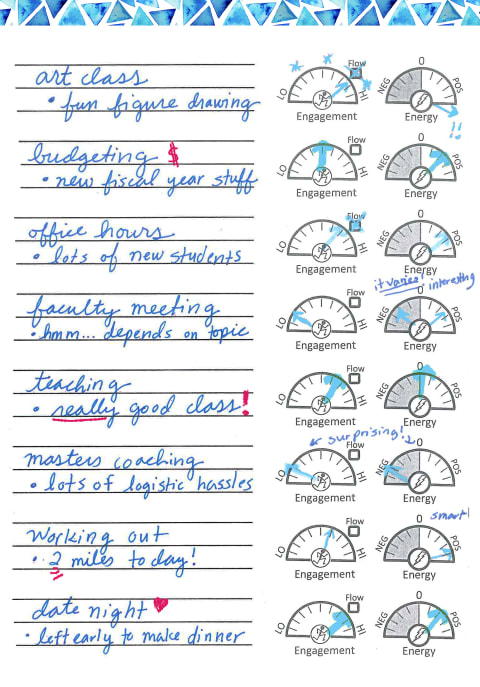Advertisement

Finding the things that challenge you, that bring you joy, and that make life feel truly worthwhile starts with reflection. But what are you supposed to reflect on? How do you find the data to answer those big questions? This new book, Designing Your Life, was written to help you do just that.
Written by two legendary Stanford design innovators, DYL aims to apply the principles of design (structure, organization, analytical problem-solving) to the esoteric question we're all asking—how should we live? This excerpt explains how you can begin laying the foundation for the life you want. So, like any good designer would do, start at the beginning, and build from there.
Be open to "wayfinding."
"Wayfinding" is the ancient art of figuring out where you're going when you don't know your destination. Traditional wayfinding (out in the wilderness, for example) requires a compass and a direction. When it comes to wayfinding in life, there's no one destination. So, you can't just put your goal into your GPS and have it spit out the perfect directions.
What you can do is pay attention to the clues in front of you, and make your way forward with the tools you have at hand. The first clues for finding your direction are engagement and energy.
When you learn which activities reliably engage you, you're discovering and articulating something very helpful in thinking about your future. Designers have a bias to action—which is just another way of saying that we do things and don't just think about things. Tracking when you are and aren't engaged and energized will help you discover what's really working for you.
Find your flow
Flow is that state of being in which time stands still, you're totally engaged in an activity, and the challenge of that particular activity matches your skill—you're neither bored (because it's too easy) nor anxious (because it's too hard). People describe this state of engagement as "euphoric." Flow is play for grown-ups.
People in flow characterize the experience as such:
- Complete involvement in the activity
- A sense of ecstasy or euphoria
- Great inner clarity—knowing just what to do and how to do it
- Being totally calm and at peace
- Feeling as if time were standing still—or disappearing in an instant
After engagement, the second wayfinding clue to look for is energy. We engage in physical and mental activities all day long. Some activities sustain our energy and some drain it; we want to track those fluctuations.
Once you have a handle on where your energy goes every week, you can start redesigning your activities to maximize vitality. Life design is about getting more out of your current life—not necessarily redesigning a whole new life.
Try a Good Time Journal
To help you figure out where your energy is going every week, create a Good Time Journal. How you build yours is up to you—use a favorite notebook or planner, write in the pages of Designing Your Life, grab a stack of blank paper. The most important thing is that you actually do it—regularly.
There are two elements to your journal: an activity log (where you record when you're engaged and energized. You can download a blank copy of the activity log here) and reflections (where you discover what you're learning).
Below is an example of what these can look like. You should list your primary activities and how engaged and energized you were by those activities. Try to make entries daily to capture lots of good information.

The second element of the Good Time Journal is reflection—looking over your activity log and noticing trends, insights, surprises—anything that is a clue to what does and doesn't work for you. Do the activity log for at least three weeks, or whatever period of time you need to be sure you capture all the various kinds of activities that arise in your current situation. Write your weekly reflections on blank pages in your journal.
When you are reflecting in your journal, follow the joy—follow what engages and excites you, what brings you alive. Work is fun when you are leaning into your strengths, when you are deeply engaged and energized by what you're doing.
Life is too short to remain stuck. For more on how to get the most out of your journaling practice and apply your findings to life's messy questions—like how do I find a fulfilling career? What comes next?—pick up a copy of Designing Your Life. It's the first step to gaining control over your personal and professional life and becoming a happier, more fulfilled person.
